The forest Hallerbos in Belgium is world-famous for its carpet of wild bluebells which appear in early spring. You have surely seen beautiful photos and you are wondering how to achieve the same result. I share with you my experience acquired over the last six years where I had the opportunity to photograph the flowering of bluebells.
This article was originally published on my website in French and translated by Manuel.
Come at the right time
The flowering of wild bluebells takes place at the end of April. Usually, they bloom between the end of the second week of April and the first week of May. However, the period when the forest is most photogenic is much shorter. During a normal year, the ideal is to come between April 18 and April 25 (approximately). If you come earlier, the mat may not be well supplied and there will be no leaves on the trees. If you come later, the trees will have too many leaves which prevent the light from passing. The absence of light signals the start of the wilting of the hyacinths. Obviously, these dates vary each year depending on temperatures and sunshine. You can follow the flowering on the website of the forest where the current blooming status is posted via photos on a regular basis during this time.
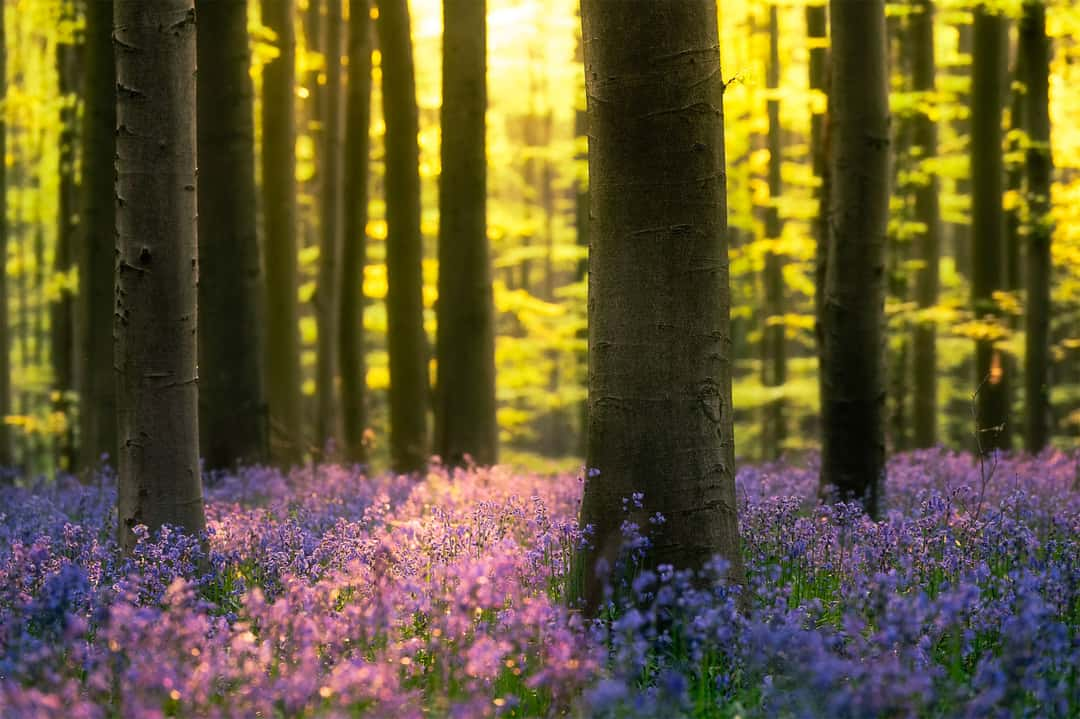
Getting up early (but not too early)
To enjoy the best light, you have to come in the morning at sunrise. The forest will be calm, there is no wind and the light is softer than in the evening. The ideal time is between one to two hours after sunrise. If you come earlier, the sun does not penetrate the forest. Later, the light will be too harsh and unflattering creating overexposed areas.
If there is thick fog (very rare), you can take photos all day. Sunset can also be good for beautiful images, as the light will be less diffused by humidity and more pronounced. It can be interesting when there is more foliage on the trees which prevents the light from entering the forest.
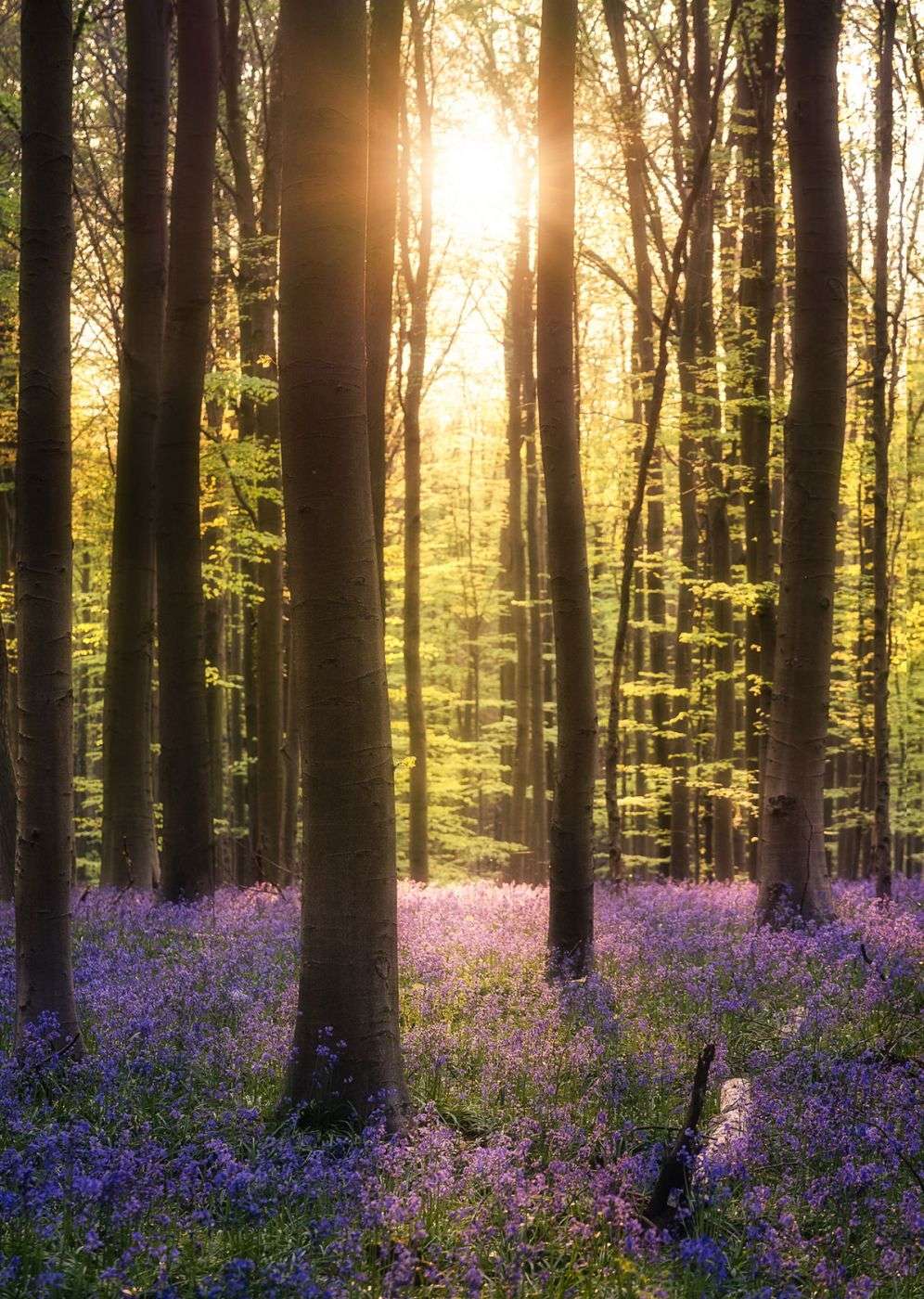
Choose the best weather
Being there at the right time and at the right time is not enough to take a beautiful photo of the Bois de Halle. The weather will have a big impact on the result of your photo session. The ideal conditions are a cloudless sky with a light mist. The sun makes it possible to illuminate the scene by creating a play of shadow and light while the mist diffuses the rays of the sun. These two elements will add an extra dimension to your photos. The wood of Halle is not often fogged. Its altitude and the absence of humidity in the forest make the presence of mist quite rare. It takes very little wind as well as humidity above 98% and a very cold night to hope for the mist to form. Oftentimes, the surroundings of the forest will be misty, but the interior will not.

Carry the right lenses
Even if landscape photography is often synonymous with wide-angle, Hallerbos is much easier to photograph with a telephoto lens. A 70-200mm can already do the trick, but sometimes you will be limited to isolating certain details. The 100-400mm combined with a 24-105mm will give you maximum flexibility. The compression created with a telephoto lens accentuates the "carpet of bluebells" effect and hides the holes between the flowers. It will work even better if you bring it slightly closer to the ground. You can also take a macro lens to take close-ups of the bluebells. If you are an animal lover, a 600mm will allow you to photograph the many deer that wander quietly among the flowers.
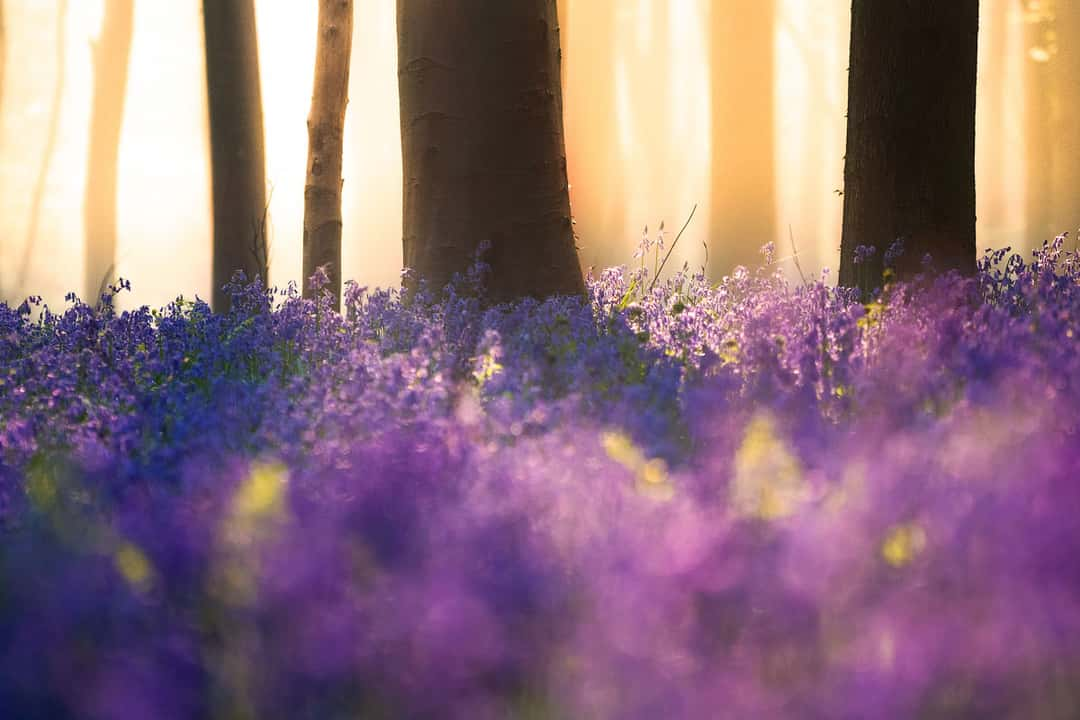
Find details
Rather than trying to capture the entire forest, instead seek to isolate details with your telephoto lens. A well-arranged group of trees, an isolated tree with a small branch, a blurred foreground, or the sun piercing through the foliage are all interesting details to take a photo of. I invite you to watch my video on forest photography which gives some additional examples and how to retouch such a photo in Adobe Lightroom to get the best result. Finding this kind of composition takes time and patience. Don't be discouraged if you can't see anything that speaks to you after a quarter of an hour. Often the rising sun will reveal a composition that looks quite uninteresting in the absence of light.
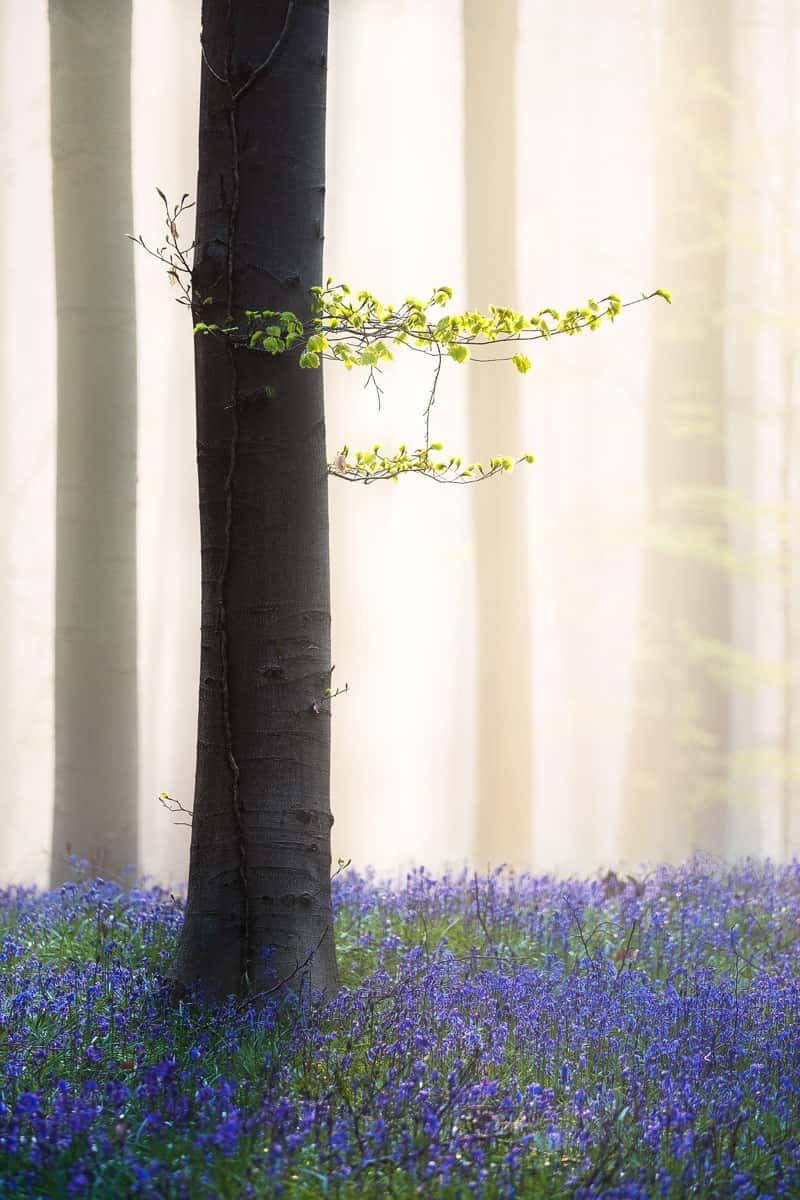
Final advice
To preserve the beauty of this magical forest in Belgium it's important for any photographer to stay on the paths and don't access the fields themselves. Even if there is no flower visible yet, trampling on these fragile bluebells can harm them for multiple years. At some places in the forest, there is a facing hill from where you can take photos with a great perspective without accessing the fields themselves.
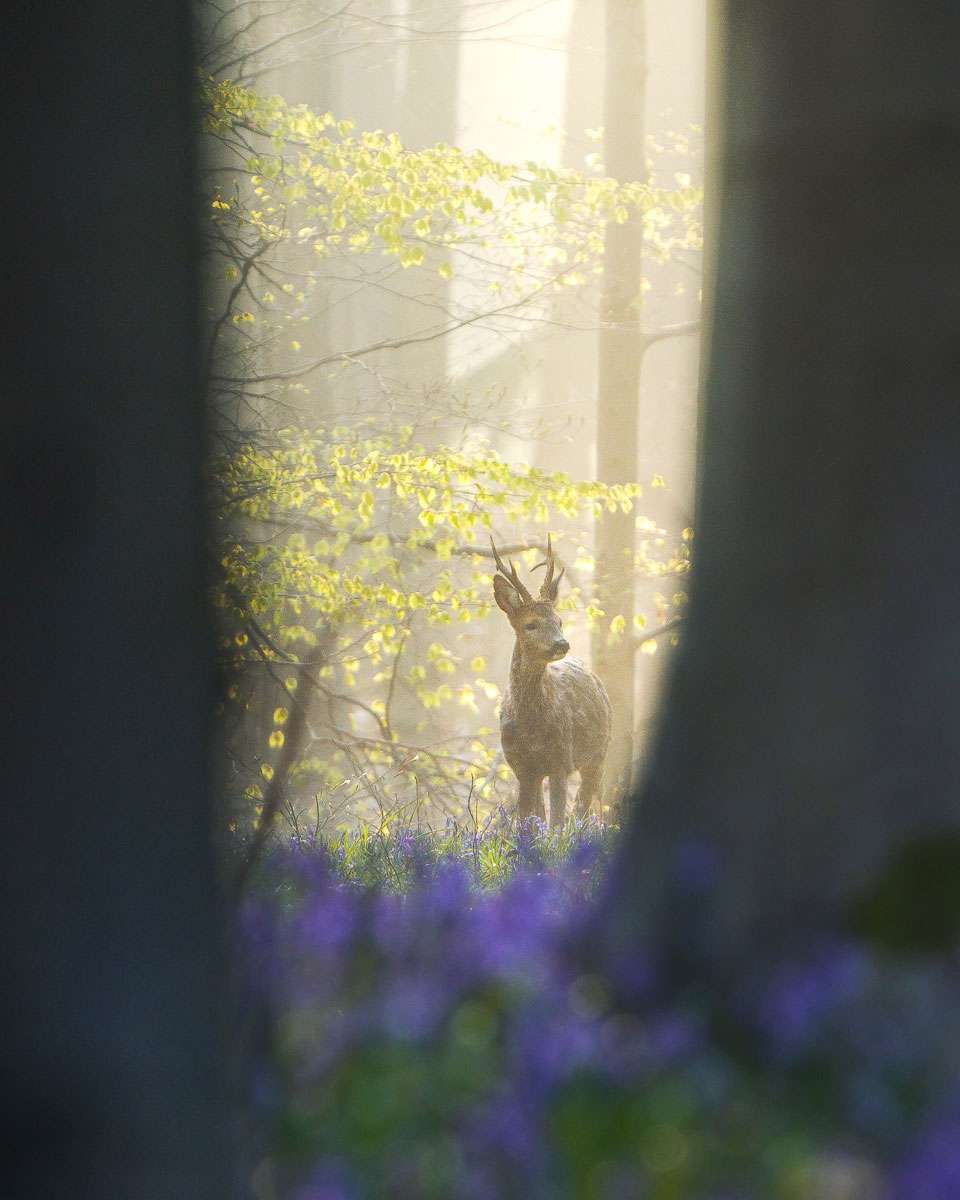
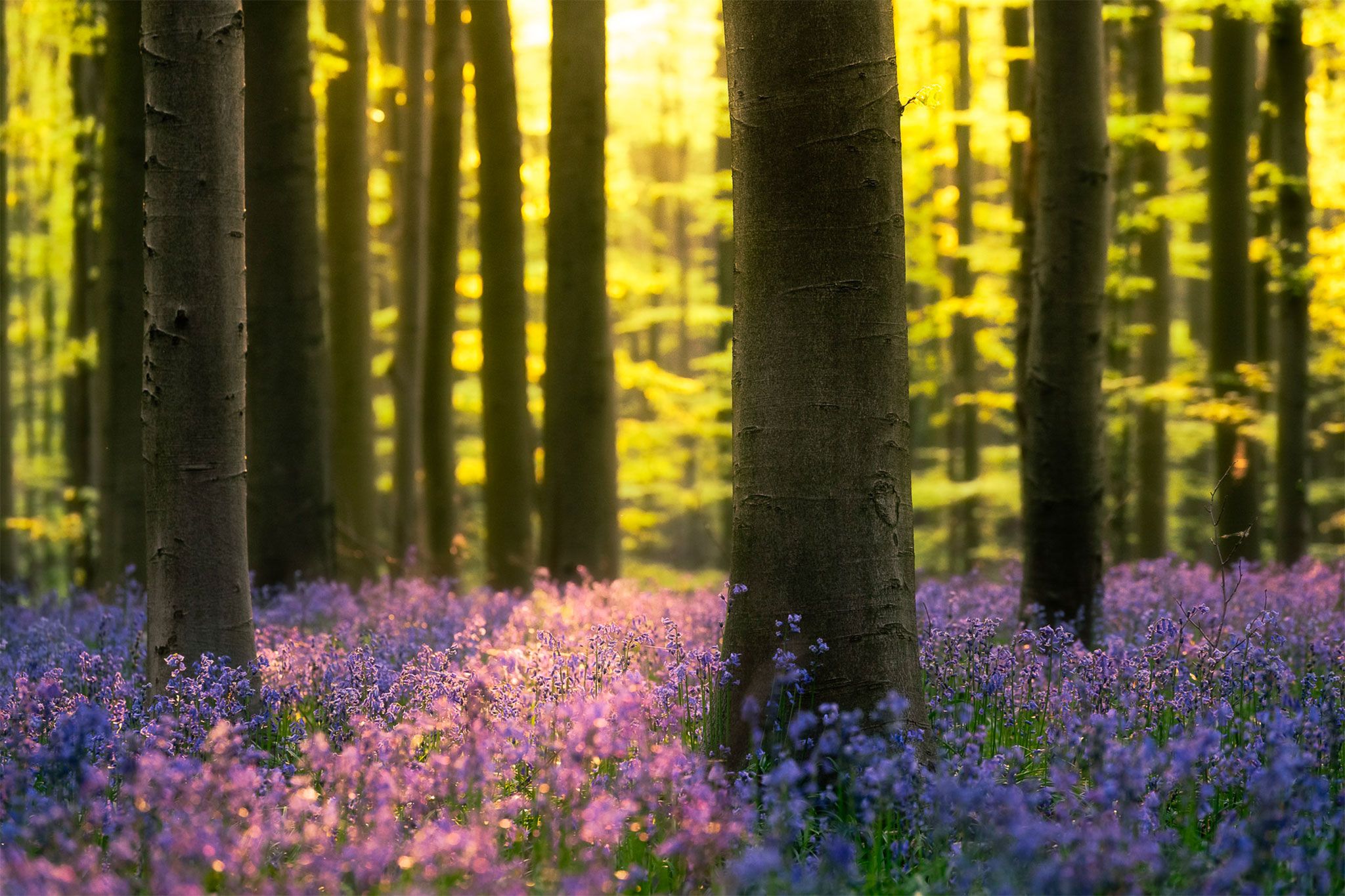




Comments (4)